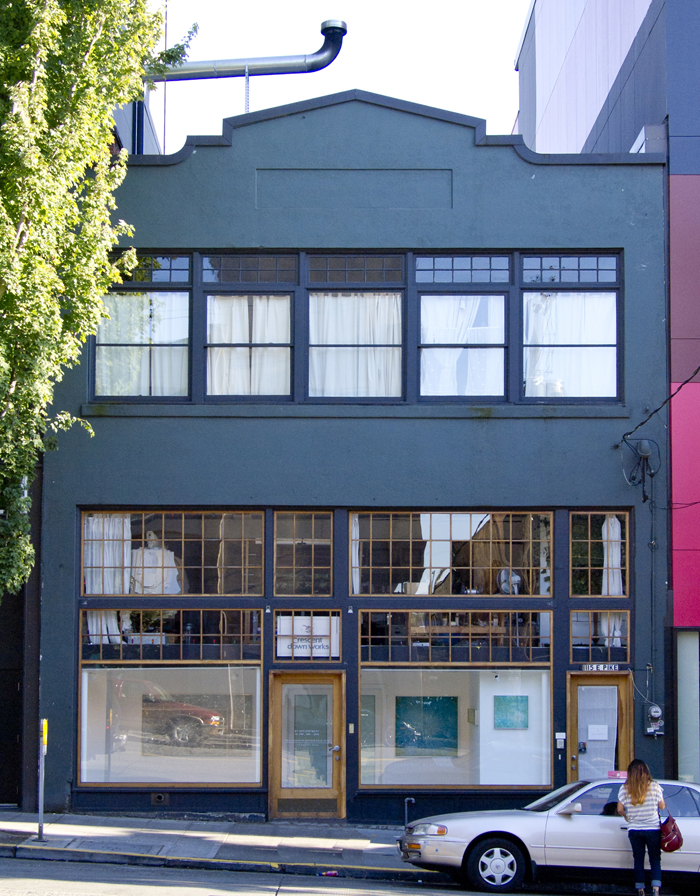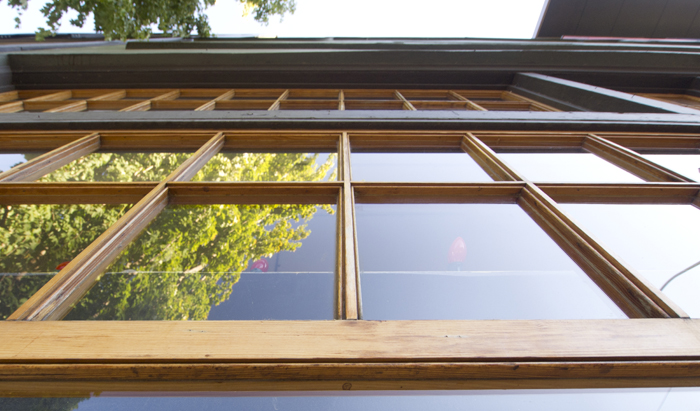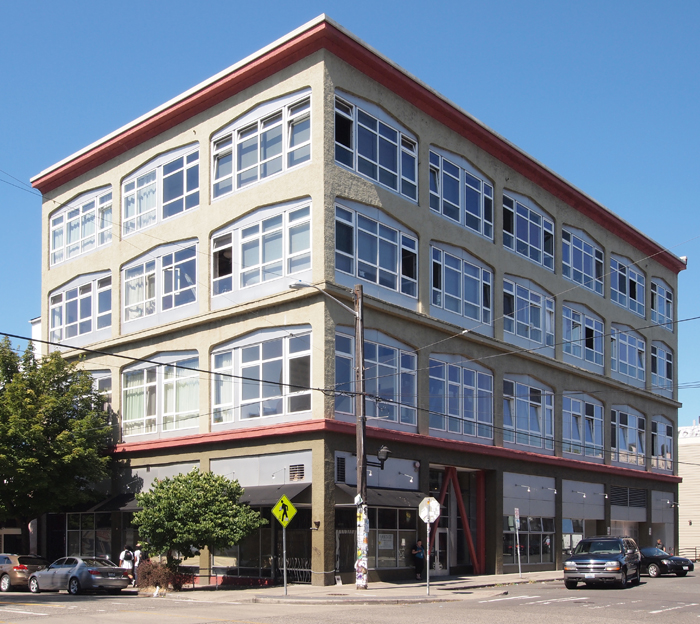 11th and Pike Steet
11th and Pike Steet
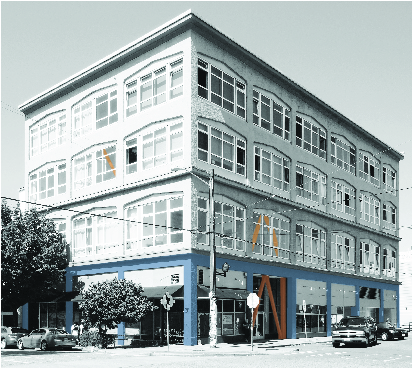
11th and Pike Streets Bracing Diagram
Capitol Hill is in one of the most seismically active (i.e. earthquake prone) areas of the world. While not as prone to the frequencies and durations of seismic events of say Japan, the Pacific Northwest can suffer virtually the same magnitude of earthquake damage. Over the years, as understanding of earthquakes has improved, ways of stemming their destructive impacts has increased. Seismologists and geologists have worked to better identify the location, magnitude, frequency, and duration of seismic events. Architects and engineers have spent decades examining post-earthquake structures, studying what has and has not worked to keep buildings from damage and collapse. In the history of construction, however, such knowledge is relatively recent. Also relatively recent is the use of steel, the primary material used to resist seismic forces. Wood frame construction can be designed to resist earthquakes, but if one is retrofitting older buildings, supplementing the existing structure with steel is usually the most practical and effective way to go.
Many of Capitol Hill's buildings were built prior to the time when seismic bracing was required by code. Such buildings, if they have neither gone under a significant renovation nor a change in use (from, say, an automotive showroom to a restaurant, common here on the Hill), have not been required to incorporate bracing. As seismic bracing is an expensive proposition, building bracing without a mandate is uncommon which is why many of our older buildings simply do without. That being said, the observant Hill resident will notice many older buildings do indeed have bracing, a signifier of a change in a building's original use, its expansion, or significant renovation. While the types of forces to be resisted are the same, the magnitude and resolution varies from building to building. This is largely due to the space available for bracing and the size and configuration of the building, leading to a variety of bracing solutions, many of which are visible on Capitol Hill. As each new earthquake provides a test of the current seismic designs, engineers continually refine their approaches, adding yet another layer of variety and richness to this seemingly utilitarian but lifesaving task.
Above is a medium/large heritage building at 11th and Pike Streets. Well cared for -- and recently renovated -- this building's seismic credentials are evident to all who pass through the front door, as they simultaneously pass through a massive, red, chevron brace. And though most robust where the building meets the ground, the brace traces up through at least two floors and two sides. Placing braces along the perimeter of the building is the most efficient deployment; however, circumstance may dictate other locations. In the case of this building, the perimeter walls were available and fit within the over-all renovation concept, so that is where the braces went.
The above diagram parses the visible-from-the-street structural highlights. Typical for this post, the orange represents the seismic bracing, and the blue the gravity structure. To keep things simple, the gravity structure is shown abbreviated (ground floor only) and the seismic indicates only what was visible, although it would be continuous from ground to roof. Eleventh and Pike is a straight forward solution, and very efficient, as it is along the perimeter. Below, one can imagine the strength imparted by the steel frame as one passes between its large, steel tubes.
[caption id="attachment_2326" align="alignnone" width="269" caption="11th and Pike Street Entry"]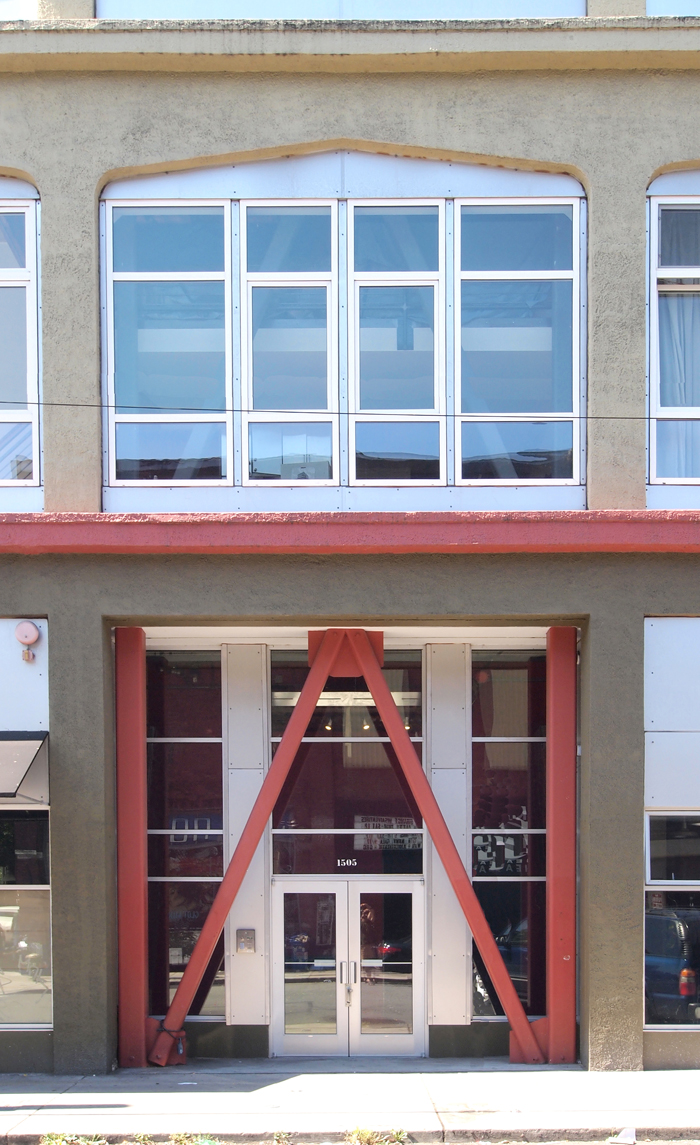 [/caption]
[/caption]
[caption id="attachment_2349" align="alignnone" width="280" caption="11th and Pike Street Entry Diagram"]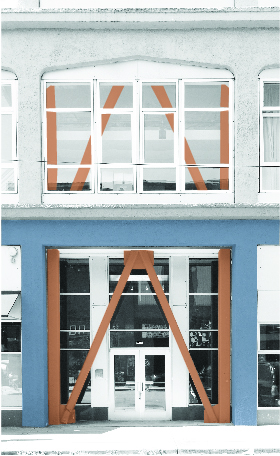 [/caption]
[/caption]
Above is a detailed shot of the chevron brace, but even amongst braced frames there are different structural and architectural solutions available. In the above example, a chevron was chosen as it allows for people to pass under it. Had the brace been an 'X', as seen below, it would not have been possible for people to pass through.
The 'X' braces below are at the East Precinct station, on the Pine Street side. Such braces are preferred to the chevron, as the loads are resolved at the intersecting points of the building's gravity structure. Because they tend to be difficult to pass through, 'X' braces are often not used on retrofits, as they tend to block doors and windows. Where this is not an issue, an 'X' can be the most economical and structurally efficient way to go, and here, the braces are duplicated while the size of individual pieces of steel is reduced and both braces work together to resist seismic loading. Of note, police stations, hospitals, and other essential facilities require a higher level of seismic resistance than commercial buildings.
[caption id="attachment_2327" align="alignnone" width="399" caption="East Precinct 'X' Brace"]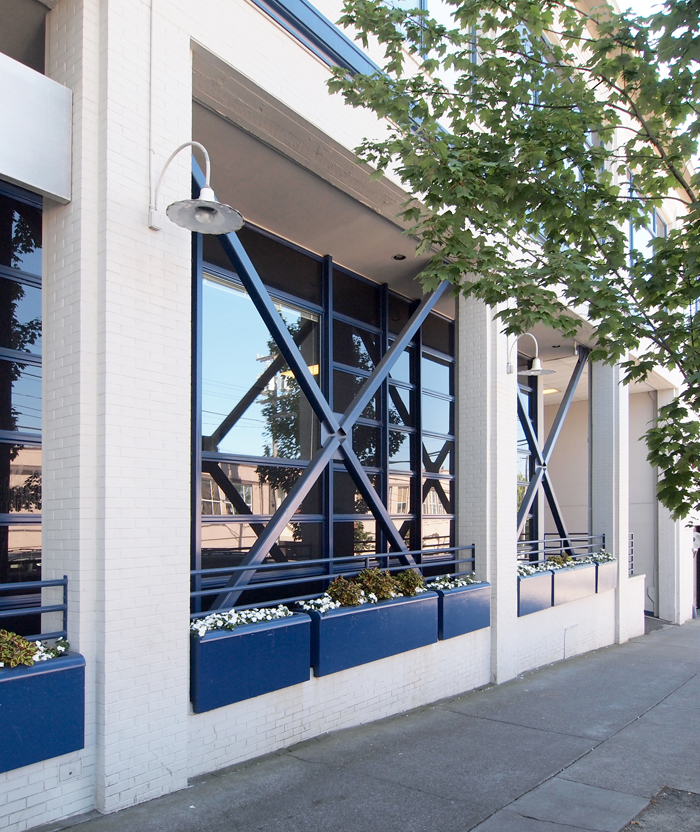 [/caption]
[/caption]
[caption id="attachment_2333" align="alignnone" width="378" caption="East Precinct 'X' Brace Diagram"]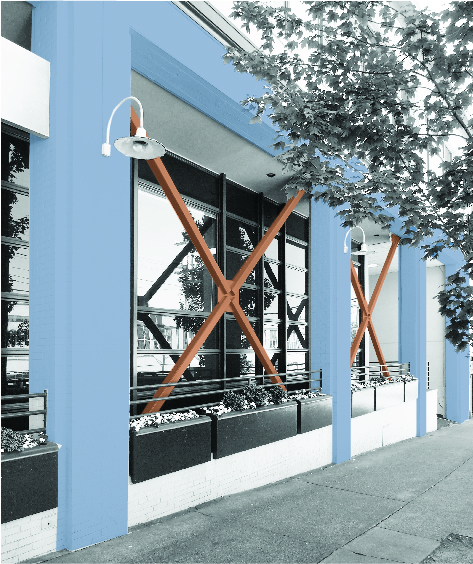 [/caption]
[/caption]
For retail and restaurant tenants, a brace on a building's facade may not be desirable, even if it is the most effective location as its presence could block visual access to window displays. For clients such as these, architects will collaborate with the structural engineer to place the braces within the body of the building, thus maintaining a cleaner and more accessible facade. This interior brace approach can pose some planning obstacles, but also some interesting opportunities to make the new structural elements a feature of the interior, such as in the Piston and Ring Building, on 12th Avenue, and pictured, below. Similar to 11th and Pike, one passes through a chevron brace to gain access, but access is deeper into the building. Here, the designers met the challenge head on, and used the brace to define the building's entry vestibule, as well as provide an organizing element for the bar at Plum. By placing the brace within, I was able to take the photograph from the sidewalk, unobstructed by a brace. The open facade also allows for the much desired connection of diners to the street life passing by. As in the previous diagrams, orange is the seismic brace, and the blue is the gravity structure (roof trusses in this case).
[caption id="attachment_2329" align="alignnone" width="392" caption="The Piston and Ring Building"]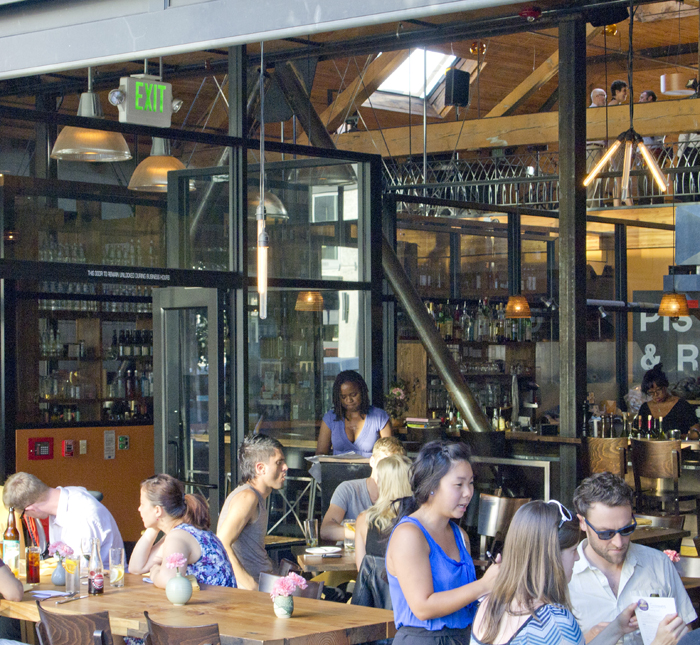 [/caption]
[/caption]
[caption id="attachment_2328" align="alignnone" width="394" caption="The Piston and Ring Building Diagram"]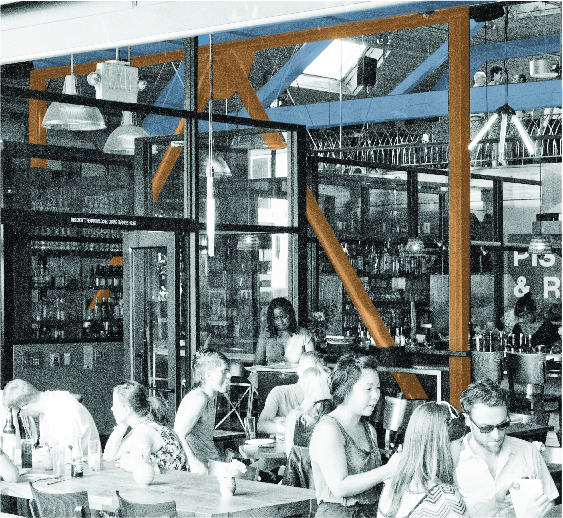 [/caption]
[/caption]
In addition to supporting a building's main structure (the gravity structure), seismic bracing is also used to prevent non-structural elements from collapse during an earthquake. Many Capitol Hill buildings are built from un-reinforced masonry, or brick that has no steel reinforcing. In some un-reinforced masonry buildings, these walls may not support gravity loads, but are the primary lateral force resisting system of the building. Unfortunately, these walls are not capable of resisting the rapid back-and-forth motions of major earthquakes, and - without steel - a brittle and can collapse. Due to this lack of reinforcing steel, these walls need the same level of attention against seismic events as does the building's gravity structure. While needed, I equate this level of bracing to a labor of love, Why? Because it can be less expensive to demolish and replace such walls, rather than preserve them. But it is a labor of love worthy of support, if a client has the means, as it preserves another layer of authenticity and heritage of buildings in the neighborhood. Below is an image of the Stumptown 12th Avenue coffee house, and the story it tells is of an owner's determination to preserve as much of the original building as possible, almost regardless of effort. In addition to the orange and blue in the above diagrams, a new color -- yellow -- has been utilized, this time to highlight the reinforcement of the above mentioned masonry in-fill walls. Note the difference in scale and number of the seismic reinforcement brace of the building structure (orange) with its large tube steel members, to that on the smaller but more numerous steel angles supporting the clay tile walls (yellow). Why the effort? I suspect the owner valued the appearance of the historic clay blocks. While still commonly used in Europe, clay blocks are not commonly seen here and their preservation is a wholly appropriate marker for the age of this building. Imagine the effort and expense needed to maintain the wall. Someone really wanted that to stay. And the pattern of the steel channels, marching along in lock-step making sure the blocks don't come crashing down on your noggin, has its own aesthetic appeal.
[caption id="attachment_2330" align="alignnone" width="420" caption="Stumptown at 12th Avenue"]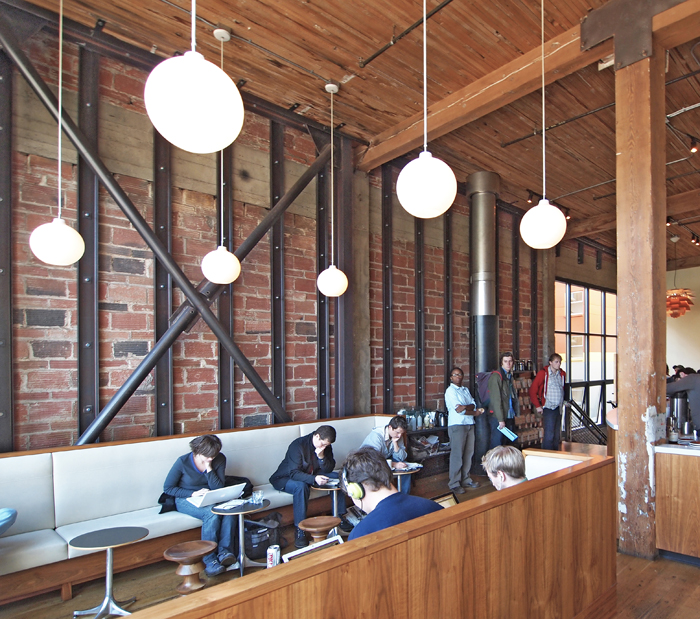 [/caption]
[/caption]
[caption id="attachment_2331" align="alignnone" width="421" caption="Stumptown at 12th Diagram"] [/caption]
[/caption]
The diagram above reveals the complexity that even such a small space can entail. Note the (orange) steel plates on at the intersection of the columns and the beams, top right, that ties the timber beams to the column. The beams on the left of the image (in blue) appear to be supporting the (yellow) angles that brace the clay blocks and tie the roof to the walls. Here, the gravity structure is not only braced, but also braces -- a nice example of the hierarchy of forces being resisted.
Above are but a few of the examples around us of updated structures on Capitol Hill. As our historic buildings are re-purposed and renovated, we will be treated to ever new solutions to keep our heritage buildings standing in our shaky corner of the world.

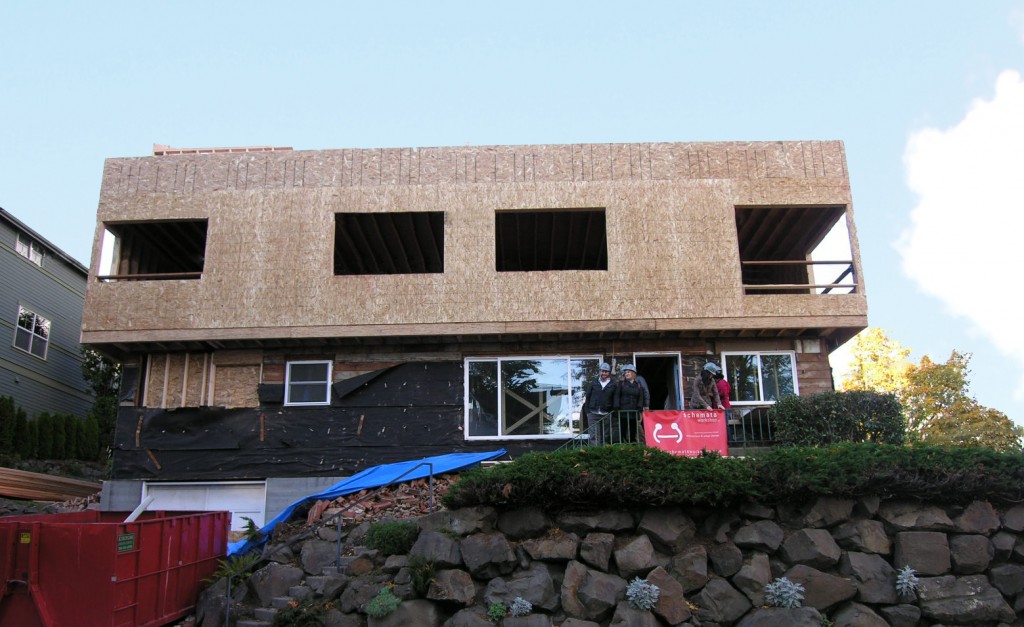
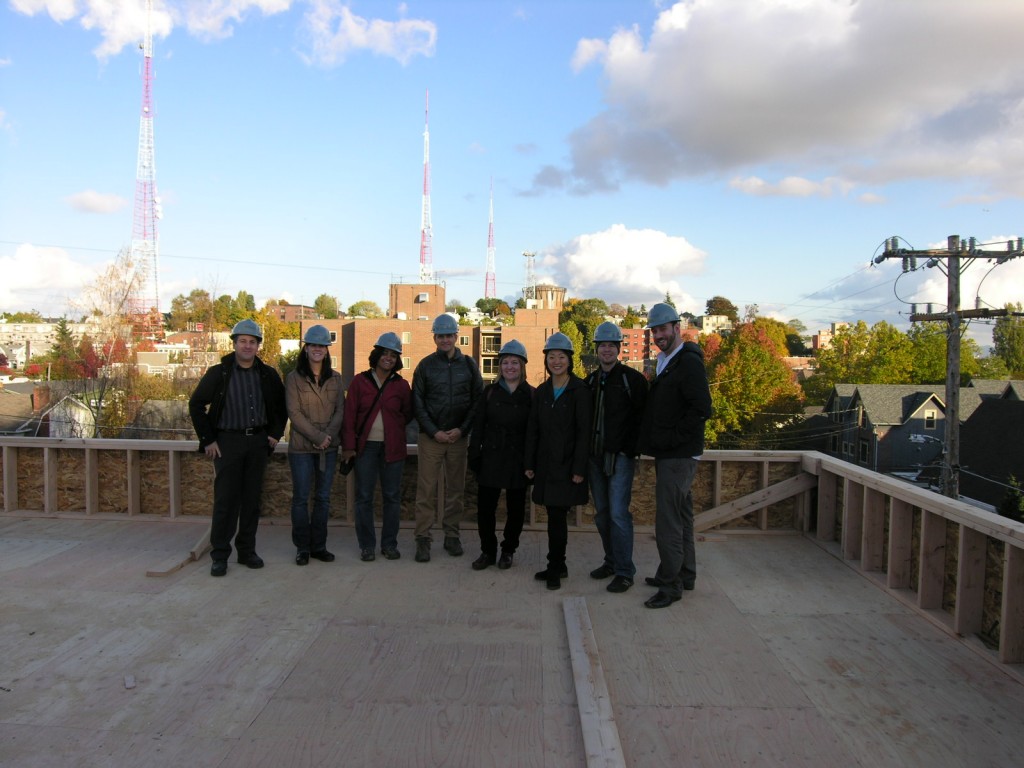

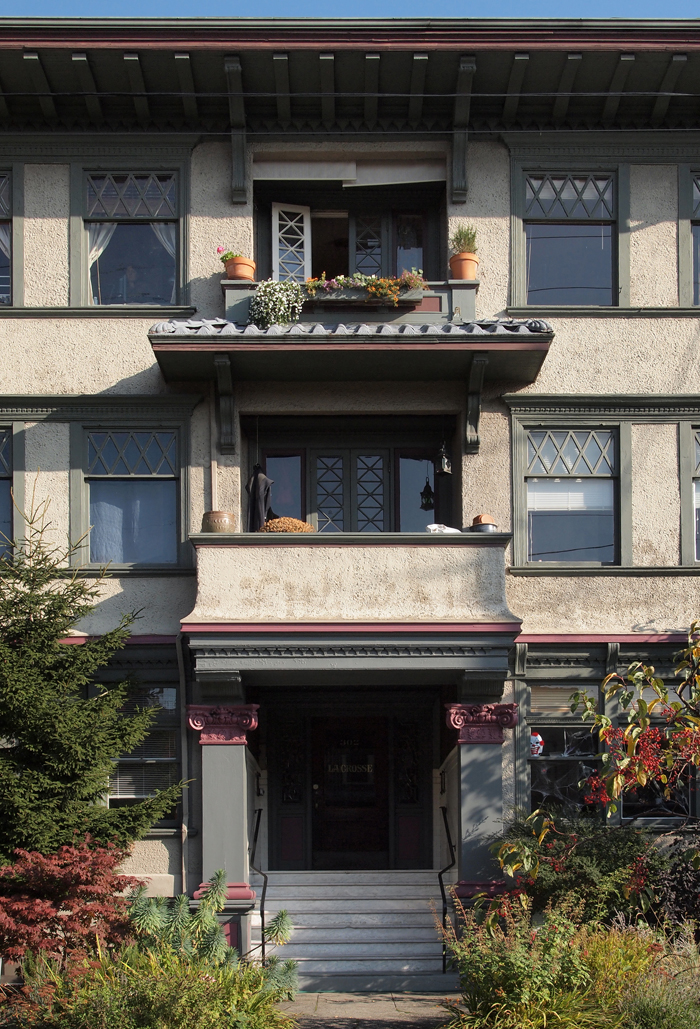
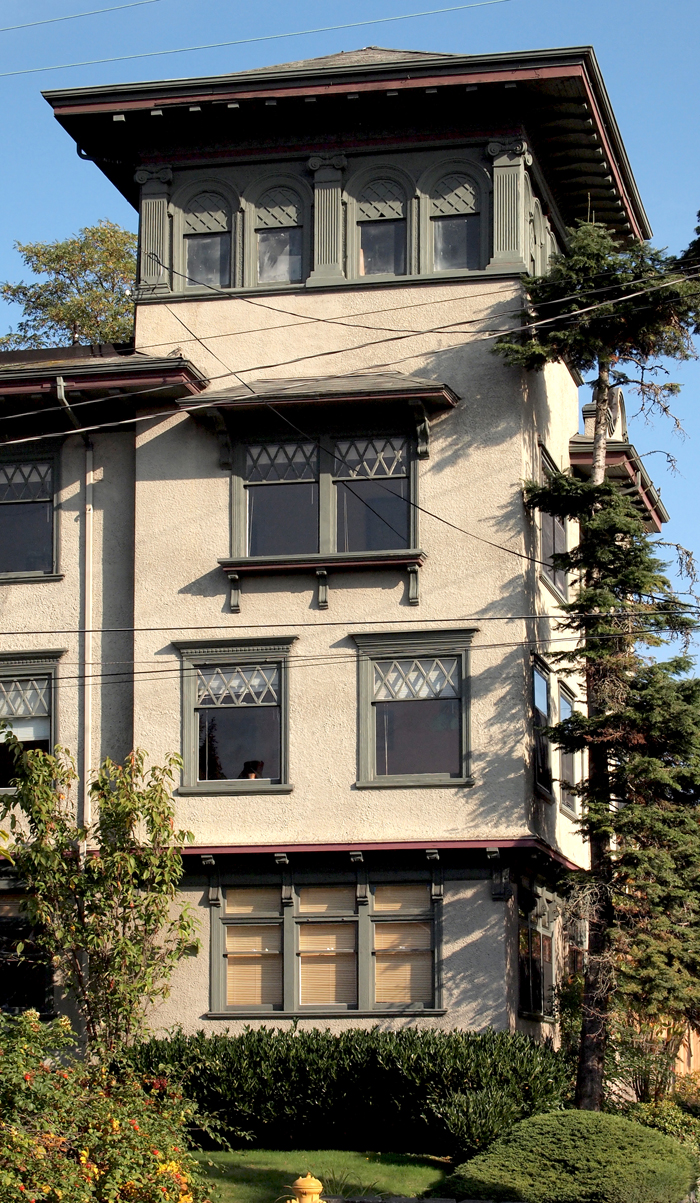 [/caption]
[/caption]

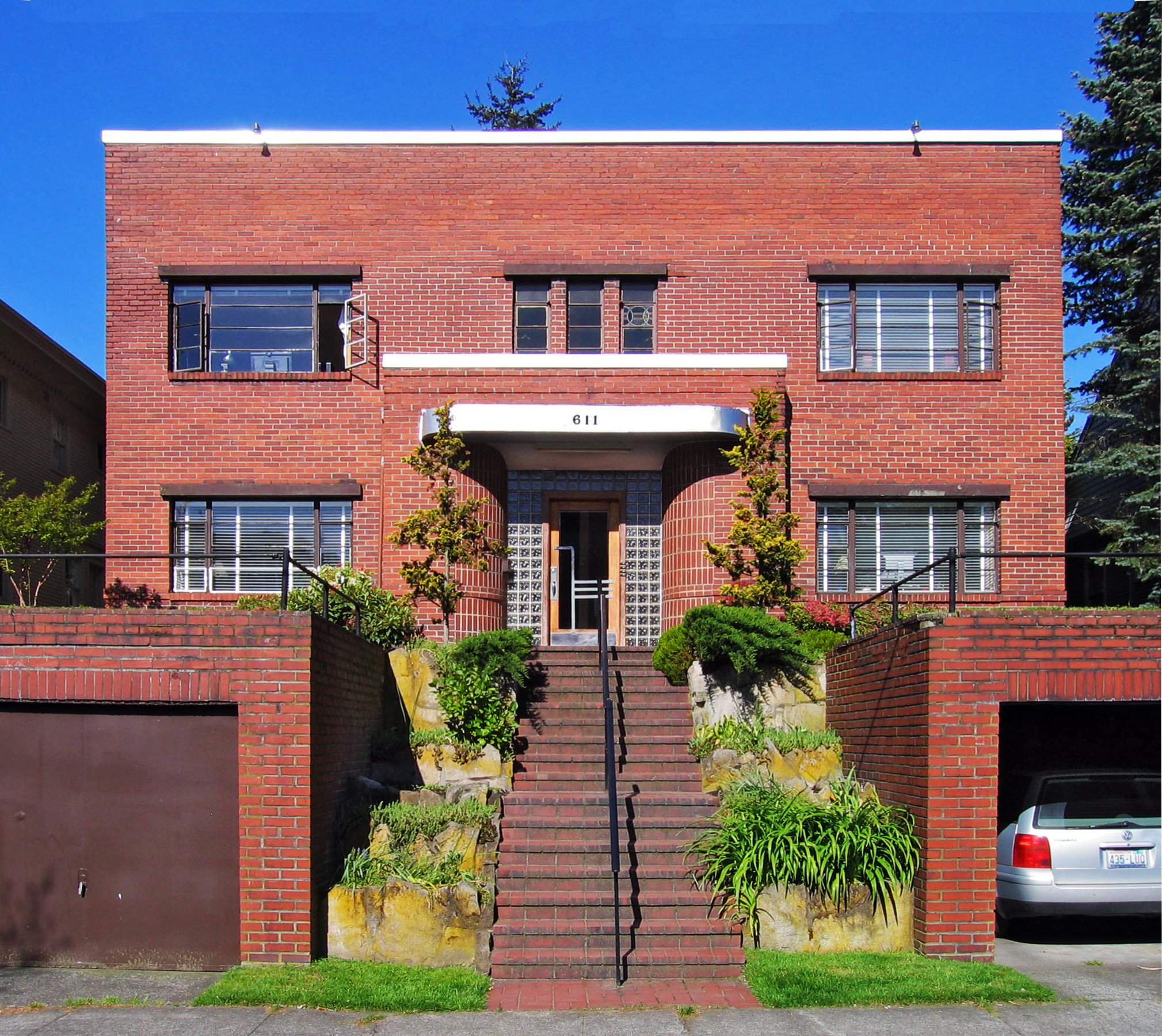
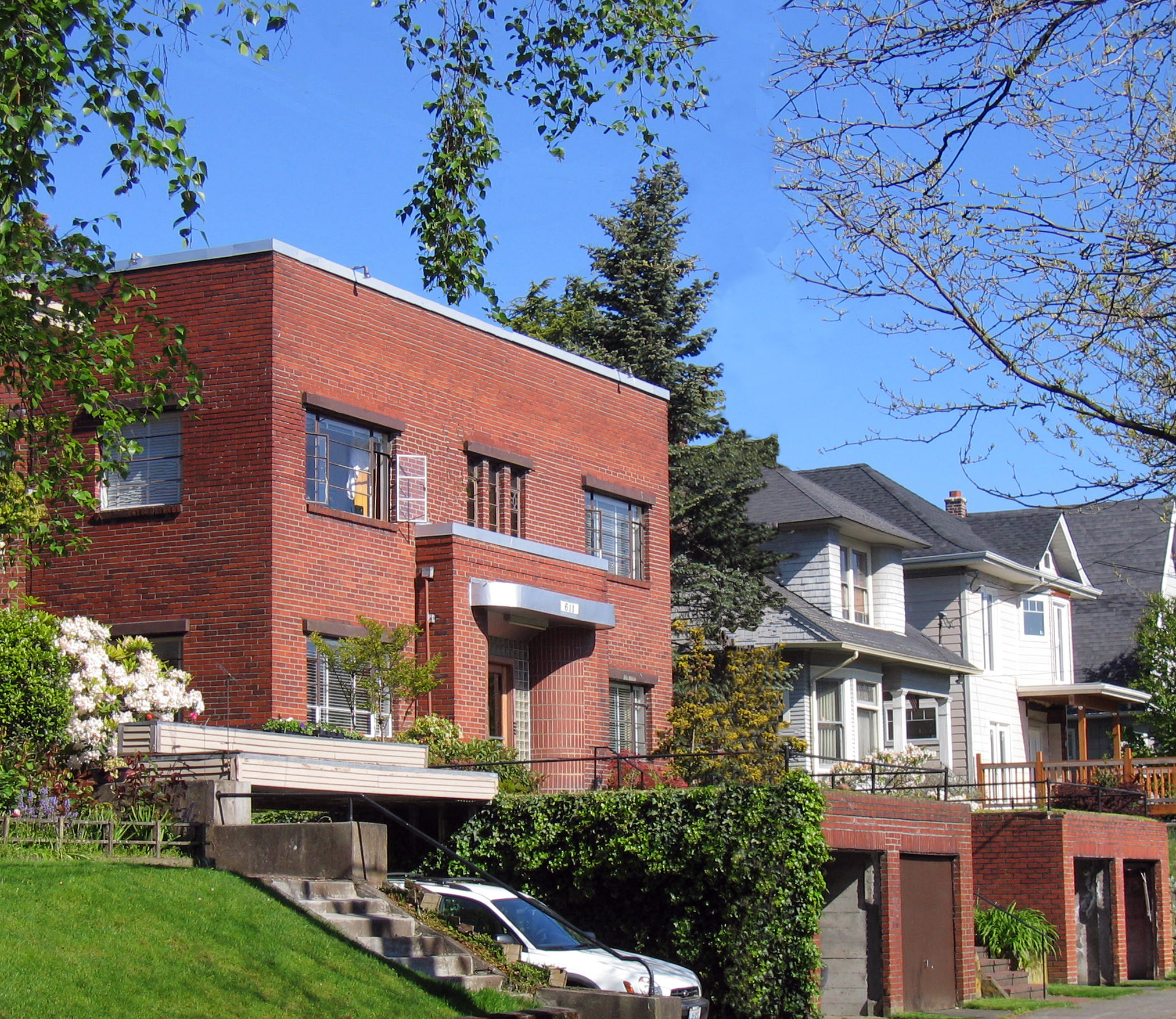
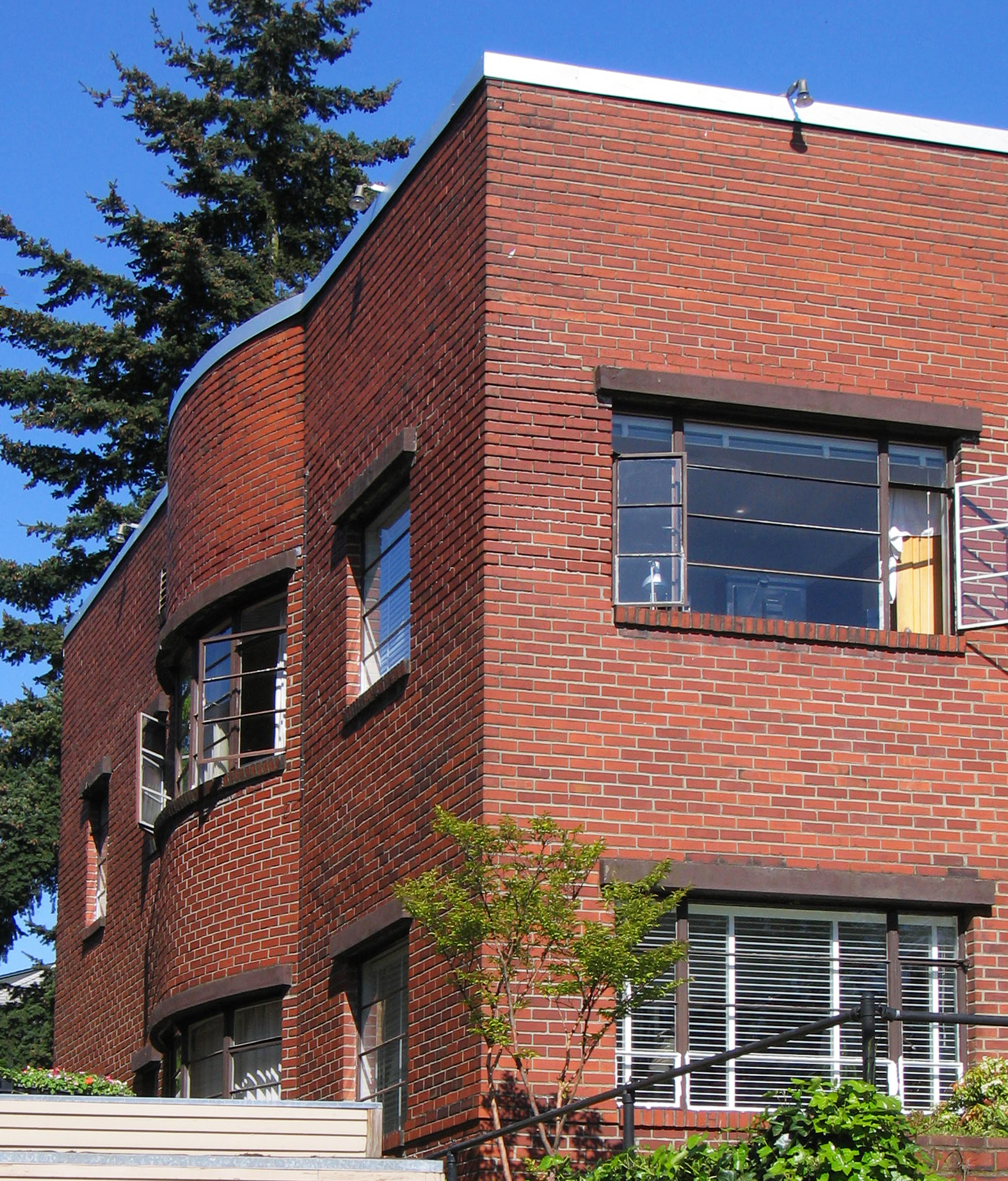
 11th and Pike Steet
11th and Pike Steet








